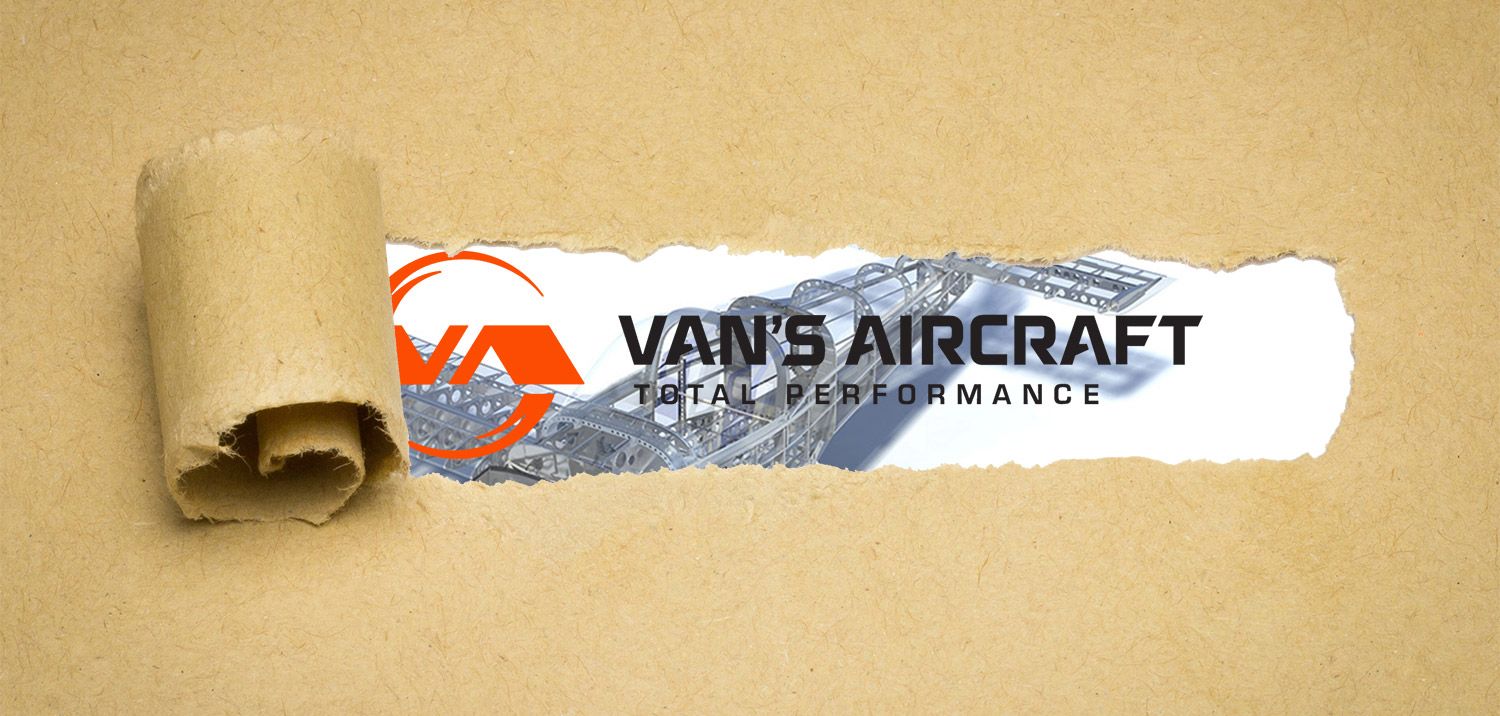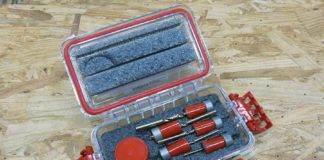 Van’s Aircraft filing for Chapter 11 bankruptcy protection this week begs the question: How can the largest and most successful company in the kit-aircraft world find itself in this situation? With more than 11,000 RVs flying and record kit sales over the last three years, it seemed Van’s was set for success.
Van’s Aircraft filing for Chapter 11 bankruptcy protection this week begs the question: How can the largest and most successful company in the kit-aircraft world find itself in this situation? With more than 11,000 RVs flying and record kit sales over the last three years, it seemed Van’s was set for success.
But countering the success of the company’s designs and their unprecedented popularity were challenges compounded by the COVID pandemic, a failure by a key supplier and missteps of its own. Monday’s Chapter 11 filing gives some clues to the situation Van’s faces that pushed the company into a form of bankruptcy that most often precedes a reorganization and recovery. (Van’s is not liquidating. Chapter 11 is designed to give a company some relief from liabilities and enable a reorganization into a sustainable business.)
In the Chapter 11 declaration is this summary: “Until recently Van’s operated successfully without bank loans or other lines of credit, relying on customer deposits and earnings for its working capital.” But then Van’s faced “a combination of unforeseen, significant events occurring over a relatively short period of time increased Debtor’s [Van’s Aircraft’s] costs, doubled its normal inventory levels, slowed deliveries, and strained Debtor’s cash flow to the breaking point.” Support from founder Dick VanGrunsven since September have kept the company afloat.
One could argue that Van’s trouble started with an issue regarding quickbuild kits. The offshore constructor failed to adequately corrosion-proof parts of the assembly, which led Van’s to a time-consuming side project to understand the nature of the problem and its scope, and construct a remedy. The issue is described in the declaration as a “multi-million-dollar setback” for Van’s. Moreover, it contributed to a growing backlog in ordered kits and extended delivery times for customers.
At the same time, there was unprecedented demand for kits during the early stages of COVID. (In fact, the entire homebuilt industry witnessed a surge in popularity, with all major kit manufacturers reporting greatly increased sales in 2020 and 2021.) For Van’s, kit sales rose from 1594 during 2019 (already a very good number for the company) to 2508 in 2020 and 3982 in 2021. According to the filing, revenue actually decreased from $31.5 million in 2019 to $31.1 million in 2020, despite a 1000-unit increase in orders. Van’s didn’t get the bulk of the kit payment until shipment. In 2021, however, the big increases in order began to show up in revenue, increasing to $37.6 million in 2021 and $52.6 million in 2022. Net income, as described in the declaration, was $2.6 million in 2019, $3 million in 2020, but dropped to $2.1 million in 2021 as investments to increase capacity began to appear in the financials. In 2022, Van’s net income turned red, with a loss of $3.3 million; it lost $1 million through the end of August this year against revenues of $43 million.
It’s important to understand that Van’s was already operating at or near capacity in 2019. Along with technical changes to the kits over time that placed more work at the factory (steps the builder would not have to perform, an expectation in the modern kit-aircraft world), Van’s found itself with greatly increased demand and set about finding ways to meet it.
Because the vast majority of the company’s kit parts are known as “pre-punched” parts and the machines that do the punching formed the production roadblock, Van’s looked for ways to increase capacity by outsourcing some of this step. One way was to have the parts normally punched instead have their holes cut by a laser. This is a common method for automating manufacture of sheet metal parts, along with CNC routers, punches and water-jet cutting. In fact, Van’s had been using laser cutting for some parts and then elected to laser-cut more of them.
Builders began to notice that some laser-cut parts would crack during the dimpling process—where the metal is formed for the purpose of installing flush rivets—and that eventually started Van’s engineering department down the path of discovering why this was happening. Many builders felt that Van’s was slow to acknowledge the problem and that by the time it did, there was a significant quantity of laser-cut parts out in the world. Van’s turned its full attention to the problem and identified the parts in question—more recently, they were able to far more accurately predict which specific airplane kits were likely to have the suspect parts. Latest estimates are that some 1800 kits are affected.
These issues would challenge many companies but they were compounded by other events, as the declaration shows. “Van’s order file doubled in the 2020 and 2021 period. At the same time, supply chain issues, and supplier shutdowns slowed productions of key components, increasing back orders and delaying order completions, requiring Debtor to hire and train more staff. Wages increased, and shipping costs rose more than four-fold during this period. Stated simply, without realizing it, Debtor was selling a high volume of aircraft kits below its cost. The combination of all these factors overstressed Van’s workforce, operating support systems and management skills resulting in a series of one-off but very costly errors.” The declaration also notes that, “Some of its senior employees with deep familiarity with both office and manufacturing process workings chose to retire during COVID.”
The picture painted is of a company overwhelmed by overlapping challenges, started by the primer issue with quickbuild kits and followed closely by a global pandemic that simultaneously cut into its manufacturing capacity, dramatically increased costs and, perhaps ironically, also greatly boosted demand. That in the effort to catch up with demand the company also lost track of internal costs and failed to increase kit prices (as one remedy) is one inescapable takeaway from the factual descriptions in the Chapter 11 declaration—and a good indication of the remedies needed to define its path forward.














As one of an estimated 1,800 builders impacted by this, Vans needs to be overly transparent and provide frequent updates related to how they are addressing the deficiencies that led them to Chapter 11. Accounting, production / supplier issues and QC. Their customer and supplier trust was among the highest in the industry. Future success will be determined by their ability to effectively communicate with stakeholders and rebuild that trust.
Kitplanes can help them in this regard by reporting on the changes Vans is implementing, beyond passing along increased prices to builders.
Dick/Vans has already committed to this.
In all these articles about Vans, there seems to be a lack of accountability of the root cause – Vans should not have taken on more orders back in 2019/2020. They were already stretched as noted, and as any builder could tell you. Had they said “we’re not taking any orders at this time but we will add you to the queue for a refundable $100 deposit”, then they would never have had the primer or laser problem. That’s how Ford and Tesla have handled their EV trucks. Sometimes saying no is the right answer. Bigger is not always better. I really feel for the builders out there having to wait on parts or redo prior work.
Wow you are smart. Can you give me winning lotto numbers this weekend? You don’t understand accountability and cause. They know the issues Laser Cut Parts cracks, corrosion protection problems on quick biuld kits, rising shipping cost of Quick build kits…. no one can predict everything. They hired a company to manage reorganization and got a new CEO. Mr.and Mrs. Vangrusven have vuvwn or loaned large personal funds to the Company.. who dies that? Van. Sure 20/20 hindsight yiu are a genius
It’s amazing to se how many builders are giving a pass to Vans. Is it about the future value of their personal investments?
It’s incredible that they only lost $1 million on revenue of $43 million YTD given all the reported challenges and poor decisions we’ve learned about. Compared to 2022 losses they appeared to be gradually turning things aground, but hit the wall with liquidity. I say that as “most” companies in trouble wait too long to fix the underlying business before blowing the whistle to secure Chapter 11 protection. The comment about senior employees retiring as an underlying cause is misleading in my view. Good management installs core processes that include both cost accounting and quality assurance. Business 101. These guys clearly failed across the board.
We all expect them to lose customers, but by “correcting” kit prices, even with a lower kit volume they should get back to normal operations, especially given that the product is fundamentally sound (despite the recent Q/A debacle). For the builders with laser cut parts, we all have sympathy. Its a real PITA to deal with, but a smaller and healthier Van’s in the long run, is the best outcome for current and future customers.